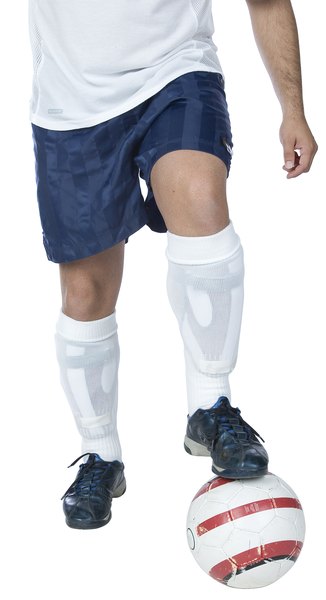How to Conduct Middle School Soccer Tryouts

Many middle schools offer soccer programs for both boys and girls. Unlike recreational leagues that assign youth players to a team, school teams usually hold tryouts so coaches can decide who makes the team. During the tryout process, coaches conduct drills and scrimmages, enabling them to evaluate each player. They take into account ball-handling skills, passing, shooting and player positions in deciding who makes the cut.
Contact the athletic director or league office and determine when the soccer season officially starts. Many athletic bodies governing middle school sports set official start and end dates for various seasons. This ensures that one team is not conducting practices before its opponents. The day the soccer season officially starts is the first day you're allowed to hold a tryout.
Announce the tryout. Because the soccer season is traditionally in the fall, schools may not be back in session when you're allowed to start practicing. Therefore, post the tryout notice on school websites and social media websites associated with the school. Additionally, contact previous players and inform them of the tryout. If you have already elected captains, ask them to spread the word as well. If the tryouts are held once school is back in session, create a notice and send it to each homeroom. Additionally, ask that the tryouts be mentioned during daily announcements.
Tell the players what you're evaluating during the tryout. After welcoming and thanking everyone for their interest, inform the players what you're looking for in a soccer player. Footwork with the ball, speed and good sportsmanship are examples of qualities in which a player should excel.
Warm up the players. Start with simple stretching exercises such as toe touches from the standing and sitting position, butterfly stretches for the inner thighs and neck circles. After the stretching is complete, have the players to jog around the field once or twice.
Instruct the players to perform dribbling drills. Ball control is one of the most important aspects of playing soccer. One example of a drill is dribbling between cones. Place cones in a straight line and ask players to weave in and out of the cones, dribbling in one direction. When they reach the end, have them turn around and come back. Time the players with a stopwatch and determine which players are the fastest and exercise the best ball control.
Ask the players to perform passing drills. One example is the three-man weave. Have players line up at midfield in three groups -- left, center and right. The player in the middle starts with the soccer ball and passes it to the player on the right. The player in the center then runs behind the player on the right and assumes his position. Meanwhile, the player who was on the right moves toward the center, passes the ball to the player on the left and then runs behind the player on the left, assuming his position. The player who was on the left now moves toward the center and again passes the ball to the right. Each player who passes the ball runs behind the player to whom he passed the soccer ball and then assumes his position, creating a weave effect. Identify the quickest and most accurate passers.
Add shooting drills to the tryout. One skill that develops in middle school players is one-touch shooting. Rather than receiving a pass, dribbling for a few steps and then shooting the soccer ball, players should learn to receive the pass and shoot the ball on goal in the same motion. For example, instruct the players to stand just outside of the 18-yard box on one side of the field. Feed them a pass toward the penalty kick spot; they must immediately shoot on goal without dribbling. Then switch sides and evaluate whether players can perform the shot from the other side. This forces them to use both feet, not just their strongest foot.
Hold a scrimmage to end the event. A scrimmage simulates game play and combines all of the skills you've witnessed separately to this point. Divide the players into two groups and position them according to where you feel they're best suited. Play a 15- or 20-minute scrimmage, then rotate other players into the game if there are extras on the sideline.
Close the tryout by thanking everyone for their participation and hard work. Tell the players when and where you'll post the tryout results.
Tips
Depending on the number of students interested in playing, consider holding multiple days of tryouts. This gives you additional time to evaluate each player.
References
Tips
- Depending on the number of students interested in playing, consider holding multiple days of tryouts. This gives you additional time to evaluate each player.
Writer Bio
Scott Damon is a Web content specialist who has written for a multitude of websites dating back to 2007. Damon covers a variety of topics including personal finance, small business, sports, food and travel, among many others.
